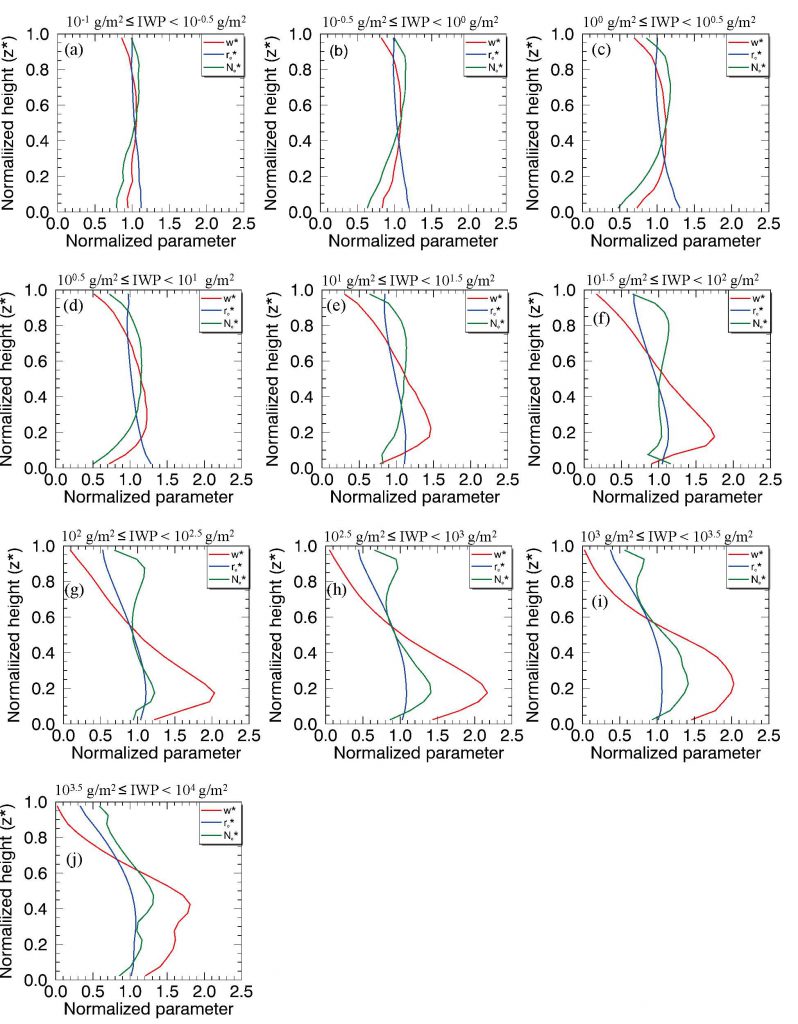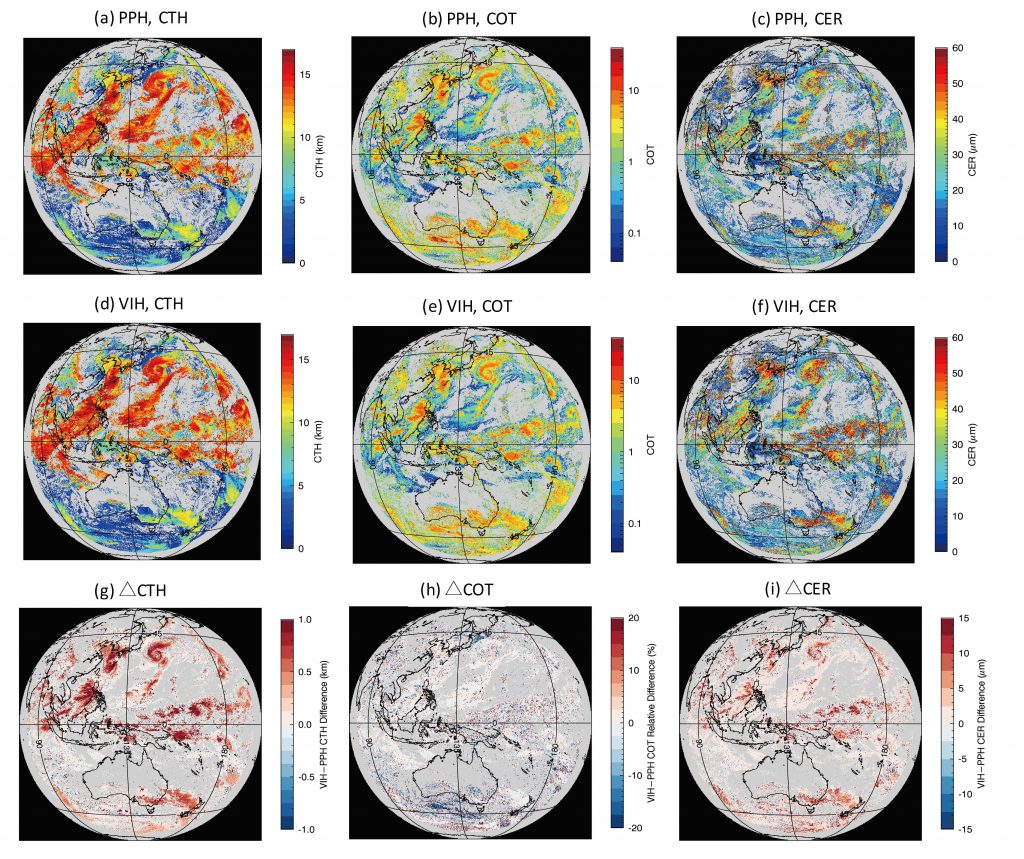Despite the vertically inhomogeneous (VIH) structure of ice clouds, current passive remote sensing methods assume plane‐parallel homogeneous (PPH) layers, which can lead to retrieval errors. An adequate VIH cloud model is required to improve retrieval performance. We analyzed CloudSat and CALIPSO satellite measurements of 1‐year period to model cloud vertical inhomogeneity; then studied the impacts of cloud vertical inhomogeneity on ice cloud retrieval using thermal infrared (TIR) measurements (Khatri et al., 2018).
The satellite measurements revealed that the peak ice water content (IWC) located around the cloud vertical midpoint moved toward the cloud base as the ice water path (IWP) increased in clouds with small IWP values; thicker clouds exhibited a gradual shift in IWC peak location toward the cloud top as IWP increased. The vertical profiles of both the cloud‐particle effective radius (CER) and a proxy of cloud‐particle number concentration showed close associations with the vertical IWC profile. An empirical model linking cloud geometrical thickness to columnar optical properties (IWP and column‐mean CER) as a function of cloud‐top temperature was also proposed. Compared with a model assuming PPH clouds, the VIH cloud model improved retrieval performance by reducing the retrieval error of the TIR‐based passive remote sensing algorithm. Further, by increasing the retrieved values of cloud‐top height noticeably for high‐level clouds and column‐mean CER considerably, with minimal effects on cloud optical thickness retrieval, the VIH cloud model yielded results that were in better agreement with DARDAR ice cloud products than those obtained under the assumption of PPH cloud layers.
Figure 1.Vertical profiles of normalized IWC (w*), effective radius (re*), and modified number concentration MNC (N*) for normalized height (z*). The normalized profiles are derived from the 2C-ICE product for 2007.
Figure 2. Full disk images of cloud properties (CTH, COT, and CER) retrieved for PPH (upper) and VIH (middle) cloud layers by using AHI observation data obtained at 0500 UTC on 24 August 2015 and difference in cloud properties between VIH and PPH (lower).
Publication
Khatri, P., H. Iwabuchi, and M. Saito, Vertical Profiles of Ice Cloud Microphysical Properties and Their Impacts on Cloud Retrieval Using Thermal Infrared Measurements, J. Geophys. Res. Atmos. (https://agupubs.onlinelibrary.wiley.com/doi/10.1029/2017JD028165)


